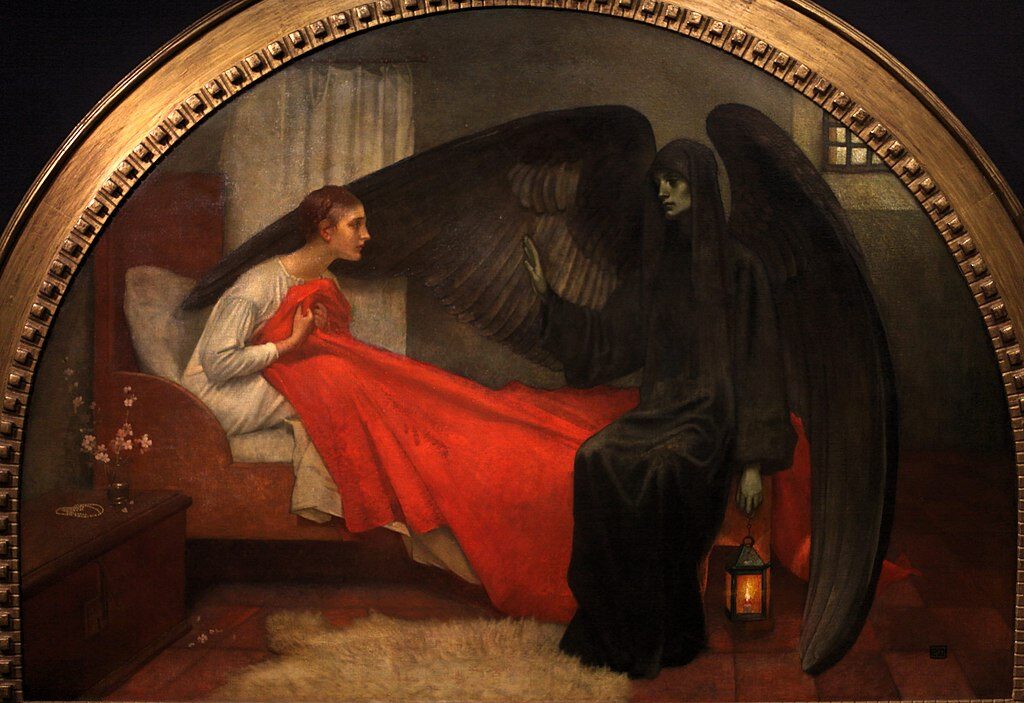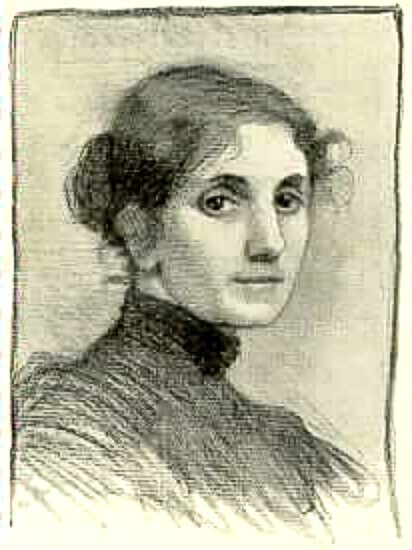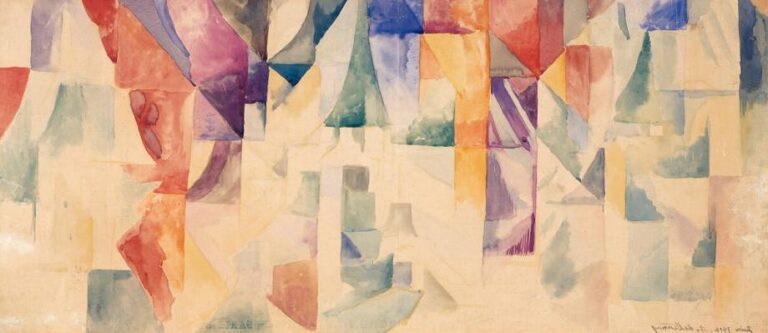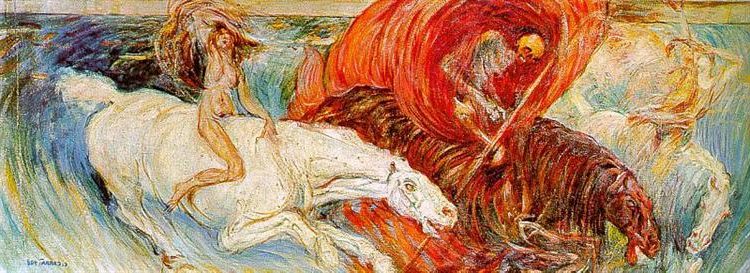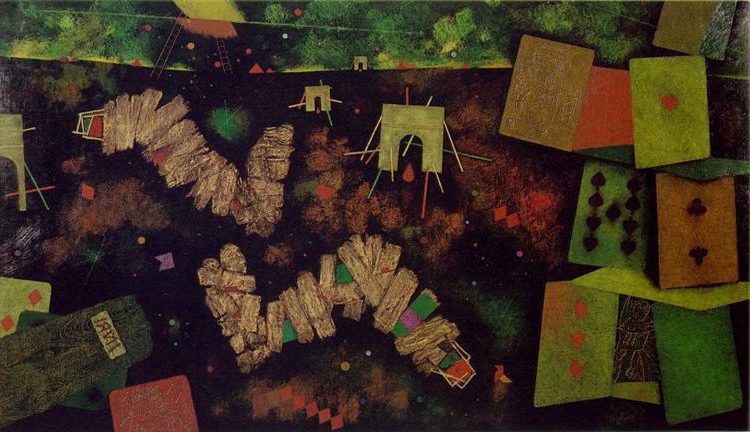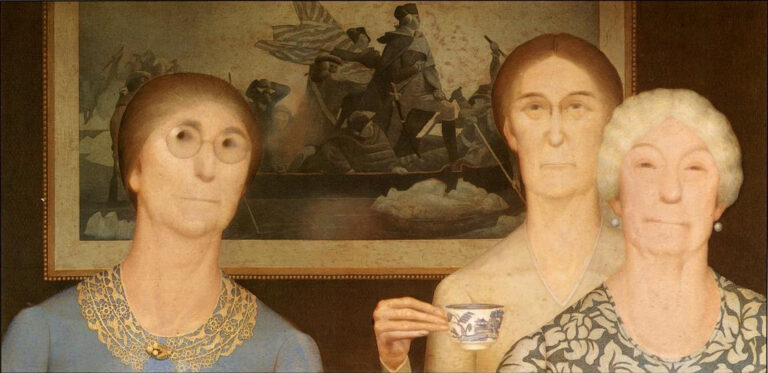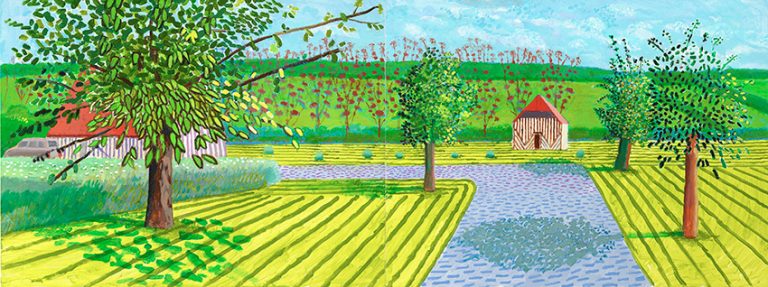Marianne Stokes Painter: Victorian Era’s Forgotten Pre-Raphaelite Master
Born: January 19, 1855, Graz, Austria
Death: August 1927, London, England
Art Movement: Impressionism, Art Nouveau
Nationality: Austrian
Teacher: Wilhelm Lindenschmit
Institution: Graz Drawing Academy of Art
Marianne Stokes Painter: Victorian Era’s Forgotten Pre-Raphaelite Master
Biographical Overview
Marianne Stokes was a talented Austrian painter who made her mark in Victorian England. Her life journey took her from Austria to France and eventually to England, where she became a prominent figure in the art world.
Early Life and Education
Marianne Stokes was born Maria-Anna Leopoldine Preindlsberger on January 19, 1855, in Graz, Austria. She showed artistic talent from a young age.
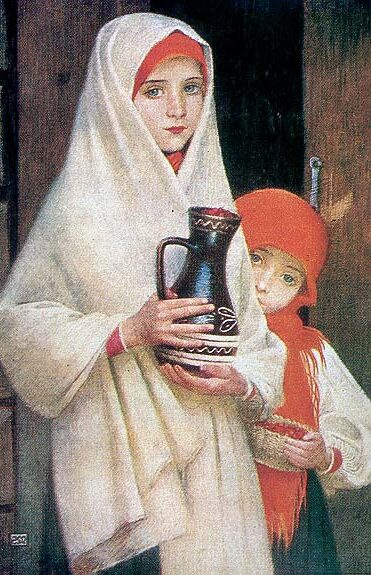

Stokes began her formal art education at the Graz Drawing Academy of Art. In 1874, she won a scholarship to study in Munich. This opportunity allowed her to expand her skills and artistic vision.
After Munich, Stokes moved to Paris around 1880. In Paris, she continued her art studies and gained exposure to new artistic styles and techniques.
Marriage to Adrian Stokes
Marianne met English landscape painter Adrian Scott Stokes in Pont-Aven, France. They married in 1884. This union marked a turning point in her life and career.
After their marriage, the couple settled in England. Marianne quickly adapted to her new home and became part of the Victorian art scene.
She changed her name to Marianne Stokes and began to make a name for herself in English artistic circles.
In England, Stokes developed her unique style. She blended influences from various art movements, including realism and the Pre-Raphaelites. Her work often featured religious themes, particularly Madonna and Child paintings.
Artistic Career
Marianne Stokes developed a distinctive painting style that blended realism with Pre-Raphaelite influences. She gained recognition for her portraits and religious scenes, exhibiting widely in London and abroad.
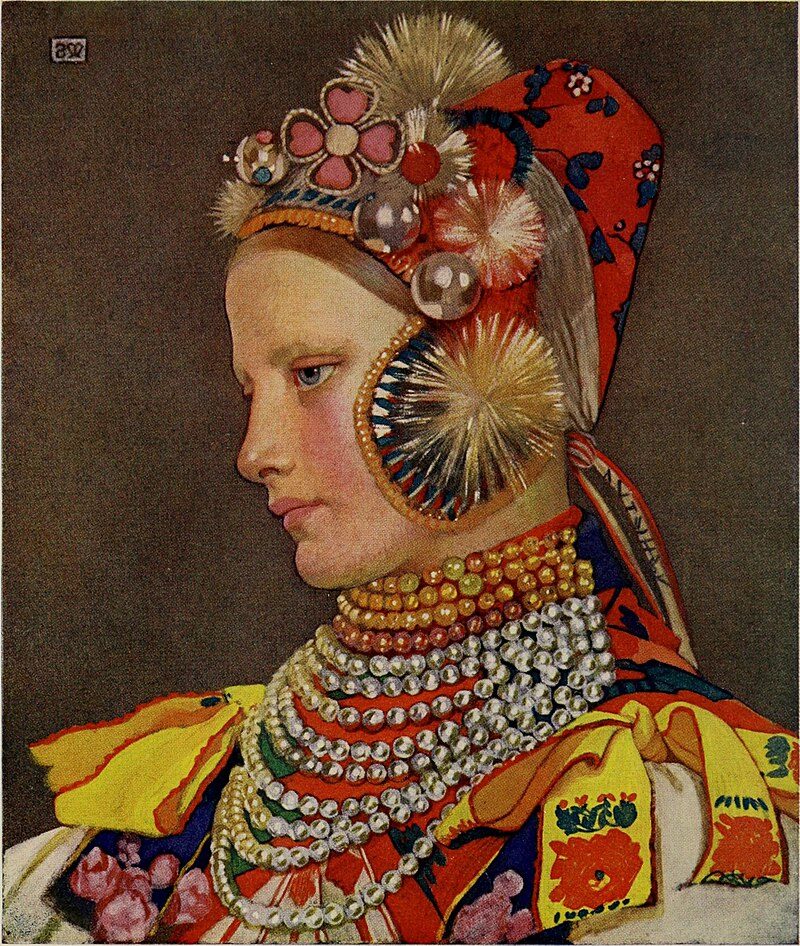
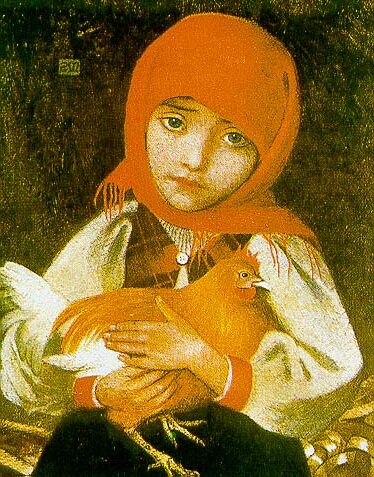
Technique and Style
Stokes embraced tempera and gesso techniques, moving away from oils. Her work featured rich colors and fine details.
She drew inspiration from medieval art and the Pre-Raphaelite Movement. Stokes painted many portraits and scenes with religious or mythological themes. Her figures often had a serene, reflective quality.
She used flat backgrounds and careful composition to focus attention on her subjects.
Significant Works and Exhibitions
Stokes exhibited regularly at prestigious London venues. These included the Grosvenor Gallery, New Gallery, and Fine Art Society.
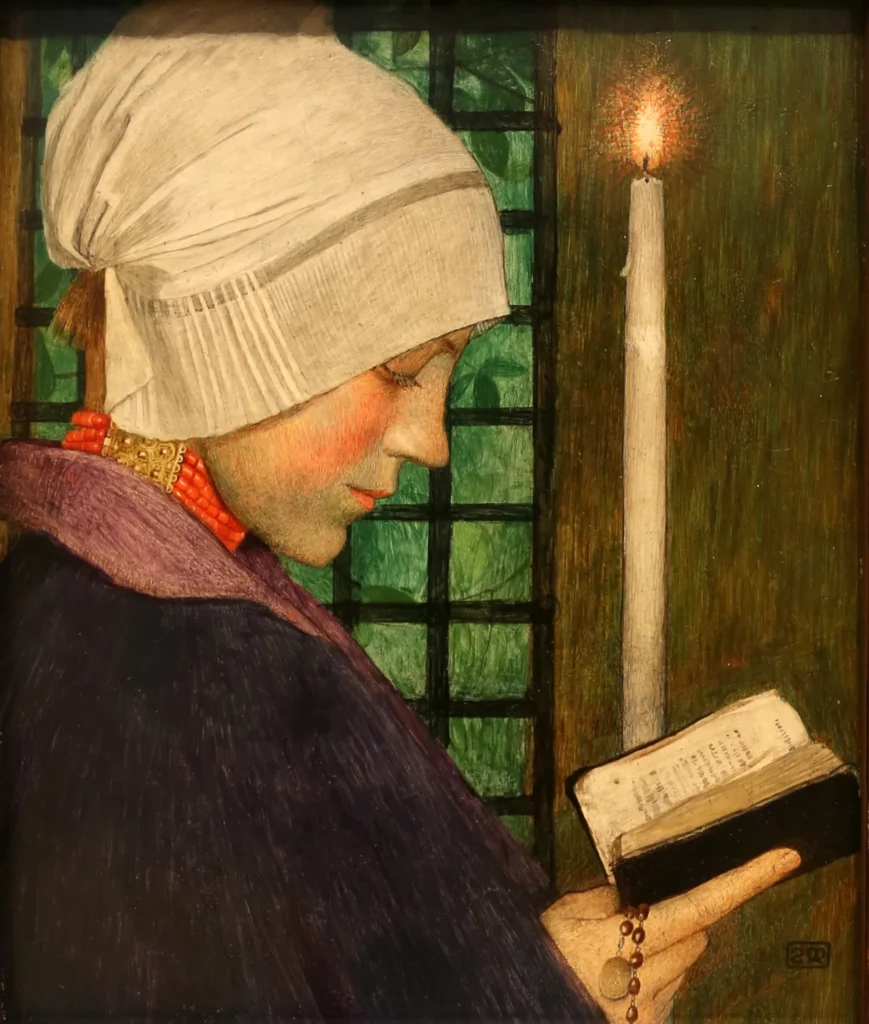
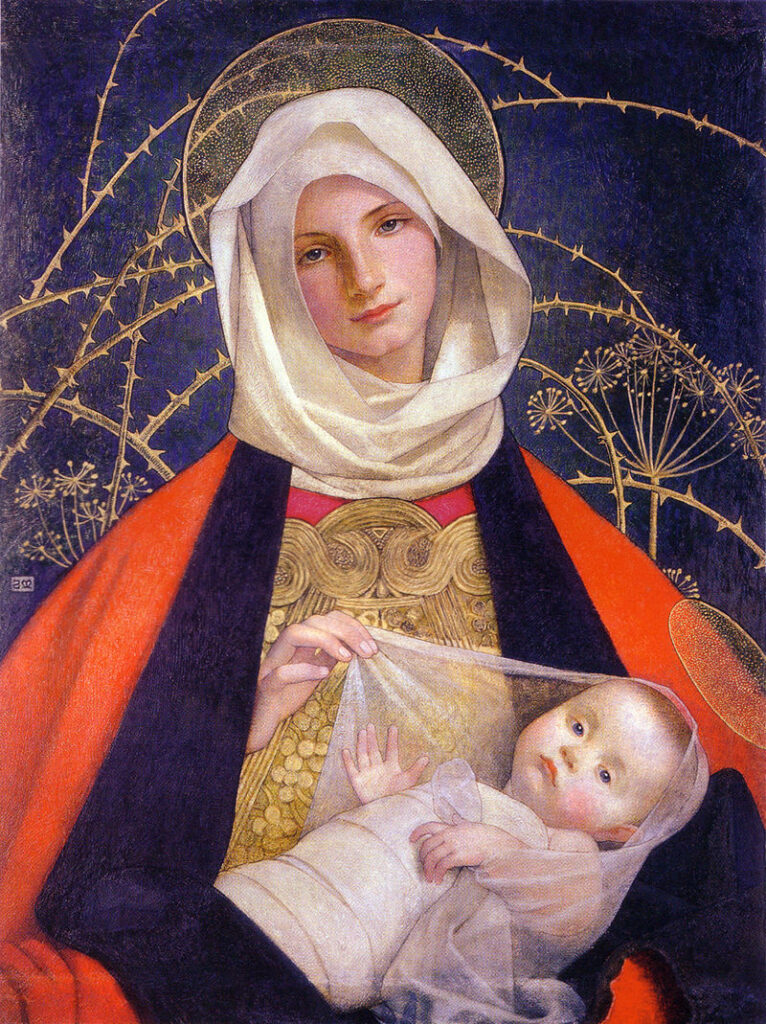
Her painting “Candlemas Day” received praise when shown at the New Gallery in 1901. She spent time in artists’ colonies in St Ives, Skagen, and Brittany. This influenced her subject matter and techniques.
In Skagen, Denmark, she worked alongside the Skagen Painters like Michael and Anna Ancher.
Stokes produced notable works like “Melisande” and “Madonna and Child”. These showcased her skill with medieval and biblical themes. Her art was well-received by critics and collectors of the time.
Cultural Impact and Legacy
Marianne Stokes left a lasting mark on the art world, inspiring future generations of women artists and gaining recognition for her unique style and contributions.
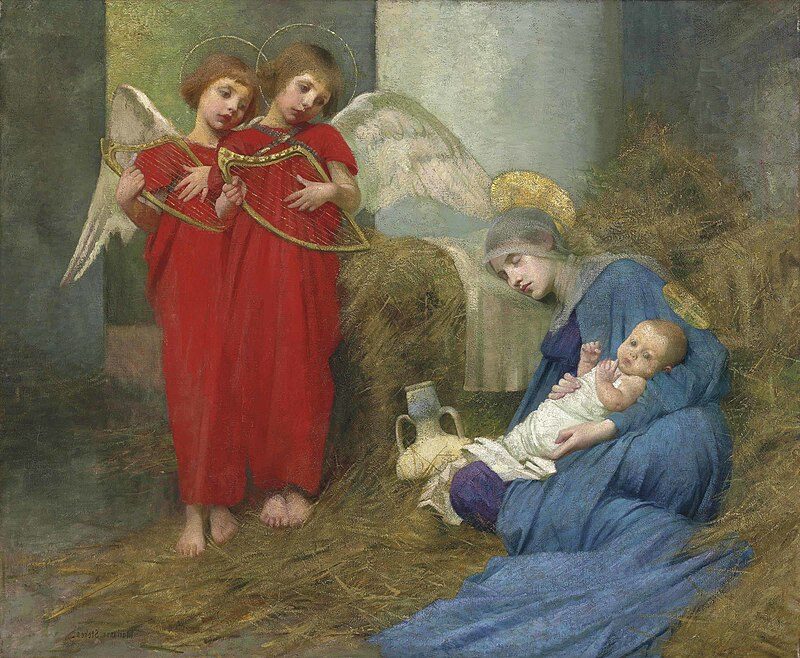
Angels Entertaining the Holy Child (1893) by Marianne Stokes
Influence on Women Artists
Stokes broke barriers for female painters in Victorian England. Her success paved the way for more women to pursue art professionally.
Many aspiring artists looked to her as a role model. Stokes’s blend of realism and Pre-Raphaelite influences inspired others to experiment with different styles. Her paintings of rural life and religious themes were widely admired.
Stokes’s involvement with the Newlyn School exposed her work to a broader audience. This helped raise the profile of women artists overall. Her paintings were exhibited at major venues like the Palace of Fine Arts in Chicago.
Memorialization and Recognition
Stokes’s legacy lives on through her artwork in prominent museums. The Tate Britain and Wolverhampton Art Gallery house some of her most famous pieces.

The Passing Train (1890) by Marianne Stokes
Art historians continue to study and write about her unique contributions. Stokes was honored as an Associate of the Royal Society of Painters in Water Colours.
This was a major achievement for a woman artist of her time. Her life and work are featured in the Oxford Dictionary of National Biography.
Recent books like “Women Artists in Paris 1850-1900” have brought renewed attention to Stokes’s art. Her paintings of Slovakia and Hungary preserve images of rural European life from that era.
Frequently Asked Questions
Marianne Stokes was a talented painter who made her mark in late 19th and early 20th century art. She worked in different styles and explored various themes in her paintings.
What is Marianne Stokes known for in the realm of painting?
Marianne Stokes gained fame for her skillful portraits and religious scenes. She painted with great detail and emotion. Her work often featured women and children as subjects.
Which art movements did Marianne Stokes contribute to?
Stokes was part of the Arts and Crafts movement. She also showed influences from the Pre-Raphaelites in her work. Her style changed over time, moving from realism to more stylized forms.
Can you name some prominent works by Marianne Stokes?
Some of Stokes’ well-known paintings include “Candlemas Day” and “Madonna and Child.” These works show her talent for religious themes. She also created portraits like “Young Slovak Woman” that captured people’s character.
What influenced Marianne Stokes’ style and subject matter in her paintings?
Stokes’ Austrian background shaped her early work. Her move to England and marriage to artist Adrian Scott Stokes also affected her style. Travel played a big role in her art, with trips to places like Hungary inspiring new subjects.
How did Marianne Stokes’ work impact female artists in her era?
Stokes was seen as a leading woman artist in Victorian England. Her success helped pave the way for other female painters. She showed that women could create powerful and respected artwork.
Where can one view Marianne Stokes’ original paintings today?
Many of Stokes’ paintings are in museums across the UK. Some can be found in the Tate Britain in London. Other works are in private collections. Art lovers can also see her pieces in special exhibitions about Victorian-era painters.

